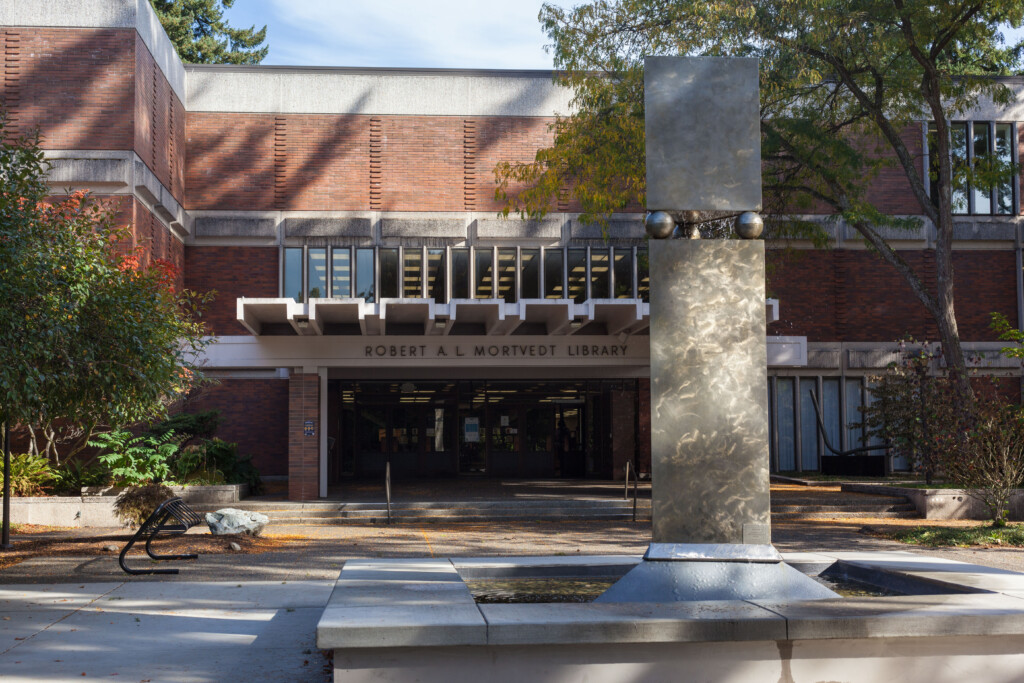The Adaptation of Learning
By Levia Roskopf '21
Creative Writing Major
In March 2020 PLU shifted to online learning in response to the COVID-19 pandemic. “How will classes work? Will there still be group projects? Will Capstone presentations still happen? How long will it be like this?”
These are just some of the questions students and faculty alike were asking. The process of teaching changed in this time, professors have found themselves altering their course plans in one way or another. But just as teaching has changed, so has learning. The new Zoom classroom environment has required students to make changes in how they normally learn and participate in class settings. It’s important to note that while some found a solid foothold in online learning, many struggled to find ways to adapt that click for them. The learning process is just as varied as the teaching process, it’s not the same for everyone, and some may be more flexible than others. And regardless if one has or hasn’t found a way to adapt yet, learning is an ongoing process.
Students of the Humanities Division at PLU are no strangers to Mortvedt Library. The library’s research resources and Interlibrary Loan (ILL) program have often been the saving graces for many research papers. Students who find themselves unable to utilize the library’s in person resources can find useful information in the online database. One such student is James, a junior double majoring in literature and history, says “I basically do all my research on the internet, the PLU library database list is my best friend right now.” Regardless of whether students currently reside on or off campus, they find a use for Mortvedt Library’s resources. But as useful as the library is, in the Humanities there’s also great merit to be found in the input of one’s peers. James notes that “interacting with other students is super useful.” Discussion and collaboration might seem harder to partake in during online courses, but communication is a crucial addition to the figurative tool belt of a student in the Humanities. It’s fitting that two excellent resources for a Humanities student would be the library and his classmates

Joy, a senior double majoring in creative writing and religion, is another student who found use for the online resources of Mortvedt Library. Joy says, “The ATLA databases have been really helpful, the ATLA religion databases in particular, because a lot of the religion classes I was taking were originally formatted to use in-person resources like textbooks at the library. We [the class] would take turns using the course reserve books.” Using online resources in place of the physical resources professors originally planned for was a crucial aspect of how Joy adapted their learning while they take online courses from home.
Another vital online asset for distance learning has been Google Docs. This is hardly a new revelation, but some students find themselves using it to shake up how they take notes. Emily is a junior, majoring in creative writing and minoring in Norwegian and history. She says, “before [online courses] I was really against online notes and kept everything in a journal, but now the notes I do take are all kept in google docs.” There’s no denying the convenience of having one’s notes organized and available for quick reference online.
With courses online, students no longer need to physically move to a new location for class. Many have found that the lack of geographical diversity normally experienced when walking to and from class has negatively impacted their ability to remember what they’ve done in class. Jack is a sophomore majoring in religion, and in reference to this struggle he says “everything kind of blurs together without landmarks like ‘I was here when I learned this.’ Especially in classes that overlap on some subjects. I’ve started using different notebooks, different colored flashcards, and different binders for each class to try and combat this.” Color coding has long been a strategy for note taking and retaining information, it’s become especially useful during this time of online classes.
Humanities students are all adapting their learning and studying process somehow. For many this means utilizing resources they’re familiar with, but for others it means trying new strategies. Whether it’s PLU resources, online resources, or physical resources, they all play a part in the success of the students. Faculty and students of the Humanities department are all changing how they teach and learn respectively. For many it was a shaky start, but as the Humanities moved forward through the 2020-21 school year, more things came into place, and adaptations continued. There’s always time to learn and change.


